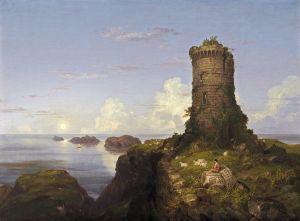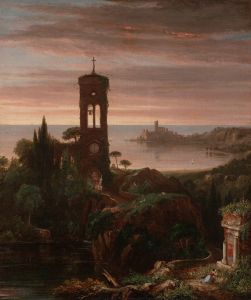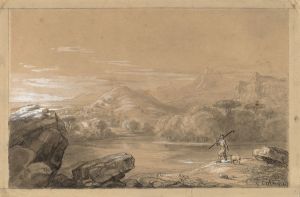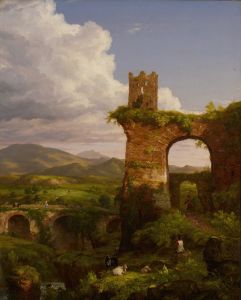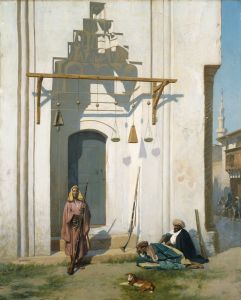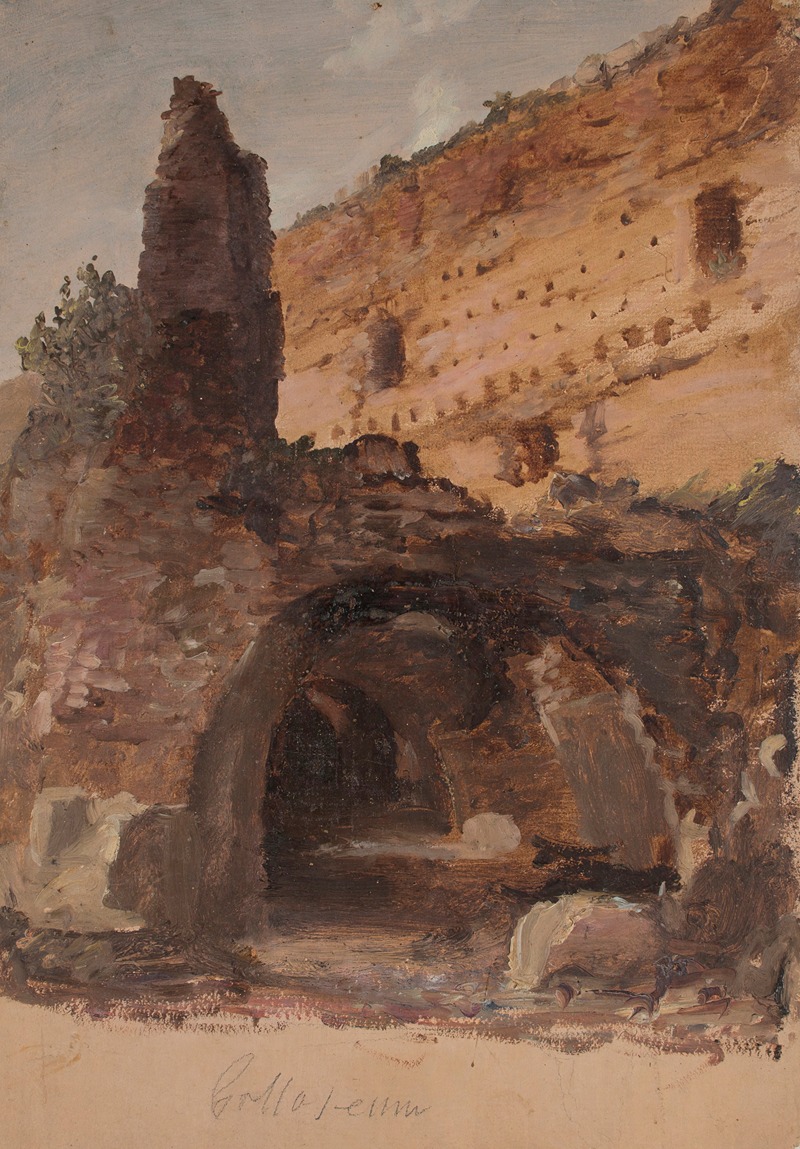
The Colosseum
A hand-painted replica of Thomas Cole’s masterpiece The Colosseum, meticulously crafted by professional artists to capture the true essence of the original. Each piece is created with museum-quality canvas and rare mineral pigments, carefully painted by experienced artists with delicate brushstrokes and rich, layered colors to perfectly recreate the texture of the original artwork. Unlike machine-printed reproductions, this hand-painted version brings the painting to life, infused with the artist’s emotions and skill in every stroke. Whether for personal collection or home decoration, it instantly elevates the artistic atmosphere of any space.
"The Colosseum" is a painting by the American artist Thomas Cole, created in 1832. Thomas Cole is widely regarded as the founder of the Hudson River School, an American art movement that flourished in the mid-19th century and is known for its realistic and detailed portrayal of American landscapes, often imbued with romanticism.
This particular painting, "The Colosseum," depicts the iconic Roman Colosseum, an ancient amphitheater located in the center of Rome, Italy. The Colosseum is one of the greatest works of Roman architecture and engineering and has stood as a symbol of the grandeur of the Roman Empire since its completion in AD 80.
Cole's painting captures the Colosseum in a state of partial ruin, reflecting its condition during the 19th century. The structure is shown bathed in the warm light of either dawn or dusk, which enhances the romantic and somewhat melancholic atmosphere of the scene. The play of light and shadow on the ancient stones highlights the texture and age of the monument, emphasizing its historical significance and the passage of time.
In the foreground of the painting, Cole includes figures of people, which serve to provide a sense of scale and to animate the scene. These figures are dressed in contemporary 19th-century clothing, suggesting that they are tourists or locals who have come to admire the ancient structure. This inclusion of human figures also helps to bridge the gap between the ancient past and the present, showing how the Colosseum continues to be a place of interest and inspiration.
Thomas Cole's interest in the Colosseum and other European landmarks was sparked by his travels to Europe from 1829 to 1832. During this period, he visited England, France, and Italy, where he was deeply influenced by the art, architecture, and landscapes he encountered. His European tour allowed him to study the works of old masters and to experience firsthand the historical sites that he would later depict in his paintings.
"The Colosseum" is a testament to Cole's skill in capturing the essence of a place and its historical significance. His use of color, light, and composition in this painting reflects his romantic sensibilities and his ability to evoke a sense of awe and reverence for the past. The painting is also indicative of Cole's broader artistic vision, which often sought to convey the sublime beauty of nature and the enduring legacy of human achievement.
Today, "The Colosseum" by Thomas Cole is held in the collection of the Museum of Fine Arts, Boston. It remains an important work within Cole's oeuvre and a significant example of 19th-century American landscape painting. The painting continues to be appreciated for its artistic merit and its evocative portrayal of one of the world's most famous historical landmarks.





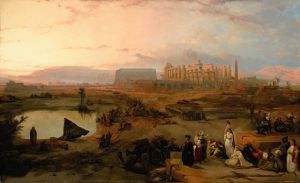
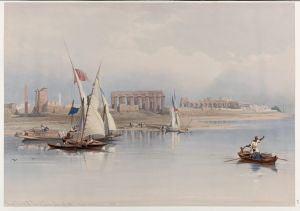
![Medint [sic] Abou [Medinet Habu], Thebes. Dec. 8th, 1838.](/imgs/217511/s/david-roberts-medint-sic-abou-medinet-habu-thebes-dec-8th-1838-4bc38982.jpg)
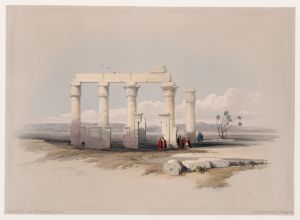
![Ruins of the Temple of Kardeseh [Qirtâsî], Nubia.](/imgs/217536/s/david-roberts-ruins-of-the-temple-of-kardeseh-qirtasi-nubia-cb337445.jpg)
